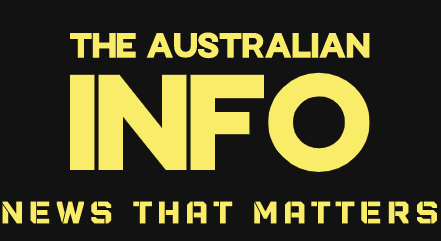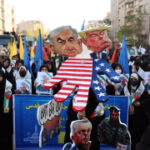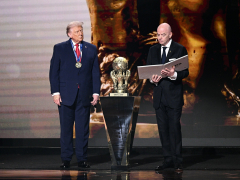After a dramatic day of telephone diplomacy, United States President Donald Trump has agreed to pause 25 percent tariffs on imports from Mexico and Canada that were to come into effect on Tuesday.
But the pause is only for a month, and a 10 percent tariff that Trump announced on Chinese imports, on top of existing tariffs kicked in on Tuesday morning.
The threat of an all-out multifront tariff war still looms: before Trump pulled back, for now, on his threat, Mexico and Canada had both also warned that they would launch retaliatory tariffs on the US if Washington goes ahead with the president’s tariff plan. And China has announced tit-for-tat tariffs of its own.
Trump’s threats have also spooked global markets and drawn condemnation from around the world, even as he has threatened to impose tariffs on the European Union and India.
But for all the chaos that Trump has unleashed, he isn’t the first US president to wage tariff wars. In fact, he is following in steps of a series of predecessors who tried to use tariffs as a bludgeon to get other countries to follow Washington’s interests.
What happened in those instances? Who were the key players involved? And what is Trump’s rationale for trying to impose tariffs?
Why did Trump impose tariffs on Canada, China and Mexico?
Trump has justified his threat by accusing the three targeted countries of not doing enough to prevent drugs, specifically fentanyl, from entering the US. He has also insisted that Canada and Mexico are flooding the US with unauthorised immigrants by permitting them access to US borders. Finally, he has alluded to the trade deficits that the US has with each of these nations – its top three trading partners.
“Number one is the people that have poured into our country, so horribly and so much … number two are the drugs, fentanyl and everything else that have come into the country … and number three are the massive subsidies we’re giving to Canada and Mexico over deficits,” Trump said in the Oval Office on Thursday.
On Saturday, Trump declared a state of emergency by invoking the International Emergency Economic Powers Act (IEEPA) and imposed tariffs on the three countries. These tariffs were to come into effect from 12: 01am EST (05: 01 GMT) on Tuesday.
But after a telephone call with Mexican President Claudia Sheinbaum and two conversations with Canadian Prime Minister Justin Trudeau, Trump agreed to put the tariffs on the two neighbours on pause for a month.
Canada and Mexico announced that they would each send 10,000 soldiers to their borders to crack down on undocumented migrants trying to enter the US, and to stop fentanyl from seeping across the borders.
Yet this reprieve is temporary and does not extend to China – and on Sunday, Trump warned that Europe is his next target. “They don’t take our cars, they don’t take our farm products. They take almost nothing and we take everything from them,” he told reporters at his Mar-a-Lago estate in Florida, threatening tariffs.
So how have tariff wars played out in the past?
1930: The Smoot-Hawley Tariffs
In 1929, the stock market crashed on Wall Street, sending shock waves through the US and the rest of the world. The Great Depression, a period of global economic turmoil that would last a decade, had begun.
Months later, in June 1930, US President Herbert Hoover signed the Smoot-Hawley Act into law. The law was originally aimed at imposing tariffs to protect US farmers from foreign competition, but it was extended to a wider array of products and increased tariffs on agricultural and industrial goods by about 20 percent.
The law was named after its top supporters, Republican Senator Reed Smoot of Utah and Republican Representative Willis Hawley of Oregon.
Almost immediately, the act caused trade wars. Several countries, including Canada, France and Spain, imposed retaliatory tariffs on US products. Canada slapped tariffs on 16 US products which accounted for about a third of US exports at the time, according to US-based nonprofit research organisation, the National Bureau of Economic Research (NBER).
The slowdown of trade weakened the US economy. By 1933, US exports dropped by 61 percent. Smoot-Hawley is often cited by experts as a factor which aggravated the US economic crisis.
Hoover’s popularity tumbled and his re-election bid failed, when Democrat Franklin D Roosevelt defeated him in the 1932 presidential election.
In June 1934, Roosevelt signed the Reciprocal Trade Agreements Act, which called for bilateral trade deals with other countries to negate the effects of Smoot-Hawley. The Act said “that a full and permanent domestic recovery depends in part upon a revived and strengthened international trade”. Between 1934 and 1939, the Roosevelt administration negotiated trade agreements with 19 countries.
1960s: Chicken War
In the 1960s, the US and European nations played an expensive game of chicken across the Atlantic Ocean.
During World War II from 1939 to 1945, red meat was rationed. The US government began a campaign to encourage Americans to eat fish and poultry instead. In the years that followed, the US ramped up the factory farming of chicken, which lowered the price of poultry.
The period after World War II also saw the acceleration of globalisation. Europe started buying cheap chicken from the US. As a result, European farmers were scared of being priced out of the market with fast, inexpensive American chickens out-clucking slower, pricier European ones.
In 1962, members of the European Economic Community (EEC), which was later absorbed into the European Union, imposed





